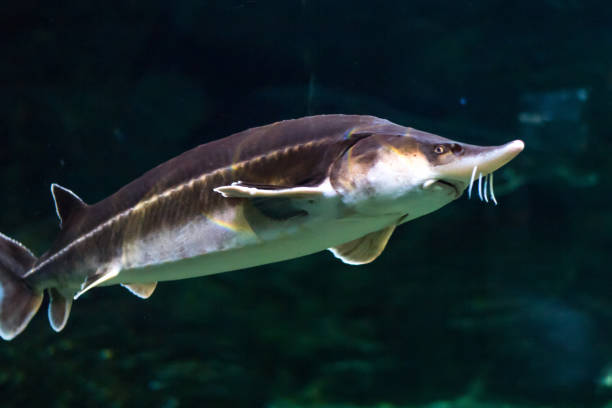The Beluga Sturgeon (Huso huso) is a large freshwater fish species that is native to the Caspian and Black Sea basins. It is renowned for its prized caviar, which is considered a delicacy around the world. However, due to overfishing and habitat loss, the Beluga Sturgeon is now listed as critically endangered by the International Union for Conservation of Nature (IUCN).
Physical Characteristics
Beluga Sturgeon is the largest freshwater fish in the world, and they can grow up to 6 meters (20 feet) in length and weigh over 2,000 kg (4,400 lbs). They have a distinctive body shape, with a long and narrow head, a flattened snout, and a broad, rounded body. The skin is covered with large, diamond-shaped scales that are gray or black in color, and the flesh is pale pink to orange.
Habitat and Range
Beluga Sturgeon is primarily found in the Caspian and Black Sea basins, including the rivers and estuaries that flow into these seas. They prefer to inhabit deep, slow-moving water, such as the bottom of the sea or large rivers. They can also be found in lakes and reservoirs in the region.
Behavior and Diet
Beluga Sturgeon is a bottom-dwelling fish, and they feed on small fish, crustaceans, and mollusks. They are known to migrate upstream to spawn, with the males reaching maturity at around 10-12 years of age, and females at 12-16 years. They have a long lifespan, and some individuals can live up to 100 years.
Conservation Status
Beluga Sturgeon is classified as critically endangered by the IUCN. The primary threat to the species is overfishing for their prized caviar, which can sell for thousands of dollars per kilogram. Habitat loss and degradation, pollution, and the construction of dams and other barriers that block migration routes also pose a significant threat to the species.
Conservation efforts are underway to protect the remaining populations of Beluga Sturgeon. The Convention on International Trade in Endangered Species of Wild Fauna and Flora (CITES) regulates the trade of Beluga Sturgeon caviar, and many countries have implemented fishing quotas and other measures to limit the harvest of the species. There are also efforts to restore habitat and remove barriers to migration in the Caspian and Black Sea basins.
Conclusion
The Beluga Sturgeon is an iconic species of the Caspian and Black Sea basins, and its decline is a stark reminder of the impact of overfishing and habitat loss on our planet's biodiversity. Conservation efforts are critical to protecting the remaining populations of Beluga Sturgeon and ensuring the survival of this magnificent species for generations to come.


Comments
Post a Comment